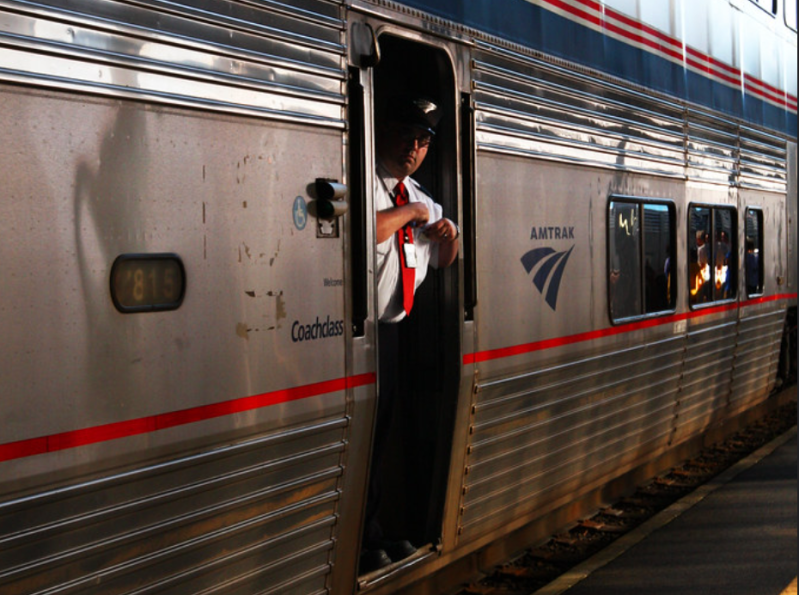Editor's note: A version of this article originally appeared in the Virginia Mercury and is republished with permission.
In a Dec. 9 U.S. House panel, the leader of Amtrak told congresspeople that the recently enacted infrastructure law had made great strides towards solving the passenger rail system’s financial woes and placing it on equal footing with other modes of transportation.
Democrats on the House Transportation and Infrastructure Committee’s rail subcommittee and Amtrak Executive Director Stephen Gardner said the $22 billion in dedicated Amtrak funding in the law would allow the system to offer more reliable service, upgrade stations and work on its backlog of deferred maintenance.
“For the past 50 years, Amtrak has described to Congress how inter-city passenger rail could substantially benefit the nation if it only received the adequate and reliable funding it needed like other modes,” Gardner said. “Today, I’d like to say something different: Thank you.”
The $22 billion Amtrak allotment is part of $66 billion the law provides for passenger rail. Amtrak would also be eligible for competitive grant funding.
Full committee Chairman Peter A. DeFazio, an Oregon Democrat who recently announced his retirement, said the new law is “revolutionary” because it provides “guaranteed and robust funding.”
Regular funding fights have created uncertainty that has hampered Amtrak’s ability to plan and execute long-term goals, he said.
“During the entirety of my long congressional career – 35 years – inter-city rail has had funding starts and stops, threats to be disbanded, endured the whims of our annual appropriations process,” DeFazio said. “No way to run a railroad, shall we say.”
The new law provides at least six times the funding that Congress appropriated in the last long-term transportation bill, which itself was an improvement over previous funding levels, DeFazio said.
Subcommittee Chairman Donald Payne, (D-N.J.), said he expected the funding would lead to improved stations with increased accessibility, better train cars and other upgrades.
Gardner echoed that pledge.
“These investments are going to mean modern equipment, upgraded stations that are accessible, and more reliable service and better service for communities across our nation,” he said.
Needs still great
Despite the optimistic testimony, Gardner said the new funding is still far short of what would be needed for existing passenger rail proposals.
A plan approved by the Northeast Corridor Commission, which includes federal officials and representatives of the eight states in Amtrak’s Northeast Corridor, calls for $117 billion over 15 years to modernize Amtrak’s’ busiest stretch.
The law provides “a significant down payment,” he said. But the plan still faces a $100 billion funding gap.
The law did enable another project, a line connecting Raleigh, N.C., and Petersburg, Va., to move forward, according to Julie White, an official with the North Carolina Transportation Department and the chair of the Southeast Corridor Commission.
White said a grant made available in the law allowed the acquisition of rail for the new line. She added that the so-called S Line would be a crucial link between the Southeast Corridor that serves Virginia, the Carolinas, Georgia and Florida, with the Northeast Corridor that runs from Washington to Boston and carries more passengers than any other Amtrak line.
Asked what Congress could do to help work with freight railroads to expand passenger service, White said the funding in the new law provided what was needed.
“You’ve done the work we need of you and we appreciate it,” she said.
Lawmakers asked about specific projects for their districts.
Payne highlighted the Gateway Program, a multibillion-dollar constellation of rail projects meant to improve freight and passenger access to New York City.
The Hudson Tunnel Project, among the largest of Gateway’s projects, would add a new tunnel under the Hudson River and rehabilitate the existing one that is more than 100 years old and sustained damage in Superstorm Sandy. The project, a joint venture of the federal government, New Jersey and New York state agencies and Amtrak, is estimated to cost nearly $13 billion.
If the existing tunnel were to shut down it would cost the $100 million in lost economic output daily, he said.
Rep. Steve Cohen, (D-Tenn.), said he wanted to see a Memphis-Nashville connection.
The subcommittee’s leading Republican, Rep. Rick Crawford of Arkansas, said Amtrak should use its new money to focus on existing issues before looking at expanding its network.
“While Amtrak has announced plans to expand its routes, it’s imperative that Amtrak first address the pressing issues with its existing systems, such as much-needed maintenance and safety upgrades,” Crawford said.
Gardner also cautioned that Amtrak may have to preventatively reduce service in January if the roughly 5% percent of its employees who are not vaccinated against COVID-19 remain unvaccinated by the federal deadline that month. Those workers would be barred from work, creating staffing shortages that would likely be solved by March, Gardner said.
Rep. Rodney Davis, (R-Ill.), predicted that Republicans would soon hold the majority in the chamber, and said they’d be interested in exploring more public-private partnerships.
DeFazio has described such partnerships as one tool for financing transportation projects in certain contexts, but has consistently pushed for robust public funding as a more efficient and applicable solution.
Jacob Fischler covers federal policy as a senior reporter in the States Newsroom Washington bureau. Based in Oregon, he focuses on Western issues as well as climate, energy development, public lands and infrastructure.







